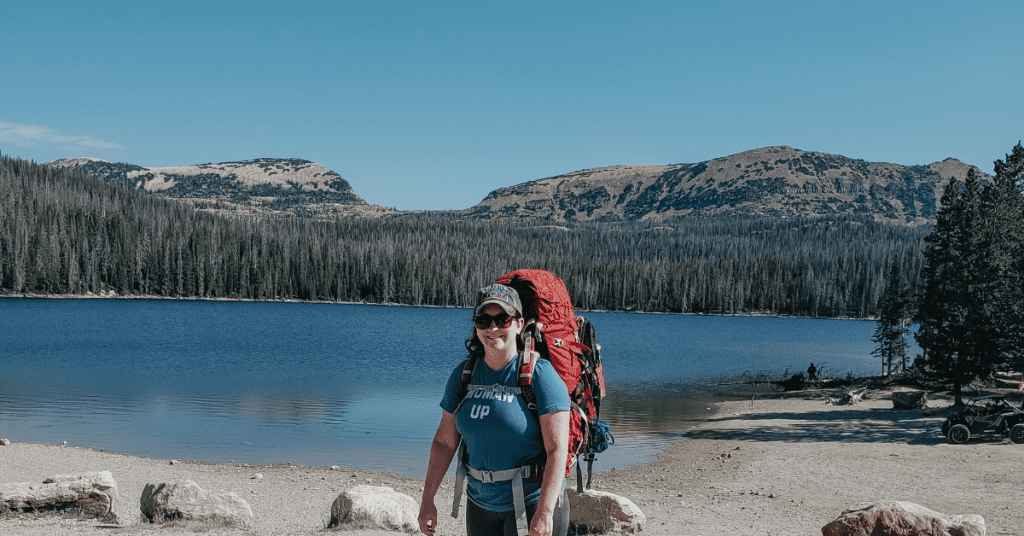
Whenever I get back from one of my latest hiking trips and post photos on social media, one of the questions I get asked the most is how to get started planning a hiking trip in the first place. I think a lot of people like the idea of going on an adventure trip, but they just don’t know how to plan a hiking trip on their own.
In the last five years, hiking has become one of my favorite outdoor activities. I’ve completely fallen in love with being one with nature, exploring new places, and witnessing all of the breathtaking scenery along the way.
There’s just something about being outdoors in the fresh air while pushing my body to new limits that help me clear my mind and find inner peace.
The longer I walk and the higher I climb, the more I feel all of the stress, worry, and busyness of life just melting away and being replaced with the sounds of birds chirping, leaves crunching, and twigs snapping.
Being deep in the woods or high up in the mountains has become my Heaven on Earth. And the best part of the entire experience is that I can bring the people I love with me to explore this beautiful planet we call home.
My fiance and I go on several adults-only hiking trips per year, and we bring the kids and dog with us on day hikes during all four seasons in the Midwest.
You don’t need to be an expert hiker, be in perfect shape, or even be kid-free to learn how to plan a hiking trip. I’m none of those things, and I hike nearly every week.
Hiking makes a great family activity for all ages and all fitness levels. In fact, more than 47 million people ages 6 and up hike in the United States each year.
And according to the USDA, the best way to stay safe while hiking is to plan for the unexpected.
So with a little bit of prep work, you can start off on your own completely safe hiking adventure in no time. And we could all use more adventure in our lives after all.
So how can you plan a hiking trip the easy way?
How to Plan a Hiking Trip
The easiest way to plan a hiking trip is to decide who’s going, what type of terrain you’ll be hiking, and which location you’d enjoy most. Once these decisions are made, it’s as simple as deciding what gear to pack, which food to prepare, checking the weather, and letting others know your plans.
1. Plan Ahead
Spontaneity isn’t a great idea when it comes to hiking. The more you know about the location and the trails that you’ll be visiting, the better.
Check county and state websites in your area for visitor information specifically tailored to hikers. Read blog posts from people who have experience hiking in that area. And consider downloading a hiking app such as AllTrails, which will also provide a ton of useful information that you need.
2. Research Your Route and the Terrain
All hiking is not created equal. Trails can range from packed and virtually flat all the way to rocky and extremely steep. They can take a quick hour of your time or some can even take weeks (if not months) to finish.
AllTrails currently has more than 100,000 trail maps in the US, tells you the difficulty level of each trail, and also lets you know which trails are kid and dog-friendly.
Knowing your route and terrain before venturing out is key to a successful and safe hike.
3. Know the Potential Hazards
While you’re planning your hiking trip, be sure to look into any potential hazards that you may encounter on the trail. Knowing as much as you can about the area will help keep you safe. Some hazards you may encounter include steep inclines, cliffs, rockfalls, cacti or poisonous plants, potentially dangerous wildlife like bears, mountain lions, and snakes, or even trails that are not marked or maintained properly.
The more you plan ahead, the safer you’ll be.
4. Estimate the Time Commitment
Make sure to estimate the time it will take you to complete the trip prior to leaving. Remember that the heavier the pack is that you’re carrying, the slower you’ll be able to hike.
Having a time estimate will also help you decide what to pack, what clothes to wear, and help you determine how long people back home should expect you to be gone.
5. Check the Weather Forecast and Daylight Hours
Hiking is a fun outdoor activity that can be done in any season. And checking both the weather forecast and the sunrise and sunset times for that day is an important step in planning a hiking trip. Knowing this information will help you pack the right gear, dress in layers, and remind you to bring rain gear or a headlamp if needed.
6. Pack What You Need
Using a hiking checklist is a great way to make sure you’ll have everything you need when hiking. Being stuck outdoors without a necessary item can turn your fun hike into a stressful situation in a very short amount of time.
Depending on your hike, you may only need a day pack with water, snacks, and a cell phone. Or you may need a full-size hiking backpack with clothes, sleeping gear, food, water, and tools for backcountry camping.
So when packing your hiking gear, it’s important to make sure you bring everything you need for your specific trip and a hiking checklist will help you get organized.
7. Know Your Fitness Level
It’s essential that you have a realistic picture of your current fitness level when planning a hiking trip.
Everyone is a beginner at some point and we all need to work our way up to the more difficult hikes. Pushing yourself too hard too fast won’t be enjoyable and can even lead to a dangerous situation.
So be honest with yourself about which trails you can realistically handle.
8. Hike With a Companion
Unless you’re a seasoned hiker or know a certain trail very well, it’s always best to hike with a companion. Having someone else to assist you in determining your current location, following a map or GPS, or traversing rough terrain makes hiking easier, safer, and more enjoyable.
9. Let Others Know Your Plan
One of the most dangerous things you can do as a hiker is to take off alone without letting others back home know your hiking plan in detail.
If something were to go wrong on your hike like breaking your ankle, getting lost, or falling and not being able to get back up on a trail, you’re much more likely to get rescued if someone back home knows when to expect you back and where you were headed.
So please be sure to leave a detailed itinerary behind with a loved one, and make sure that you both agree on a time you’ll check in for safety purposes.
10. Bring Cash
Your wallet may be the last thing you think about when planning a hiking trip, but many county, state, and national parks require you to pay for permits or passes. So make sure you plan ahead for any fees you may encounter, and bring enough cash, preferably in small bills, to pay for them.
What to Pack for a Hiking Trip
The type of hiking trip you’re planning will determine what you need to pack (and what you can leave at home). Quick day trips require a lot less gear. And backcountry hiking and camping trips can often feel like you’re cramming everything you could ever possibly need to survive into one small backpack.
When packing for any hiking trip, make a list of everything you need to adequately provide clean water, food, clothing, and hygiene. And using a hiking checklist can help you remember other important items like prescriptions, rain gear, bug spray, and navigation tools that you may otherwise forget.
Here are 18 items you may want to consider when packing for your next hiking trip:
- Hiking boots
- Wool socks
- Navigation tools like a map, compass, GPS, or a cell phone app with downloaded maps
- Filtered water or a water filtration system
- Clothing layers made out of wicking fabrics to draw moisture away from your body
- Rain gear
- High protein, calorie-dense foods such as trail mix, dried fruits, or granola bars
- A light source like a headlamp or flashlight
- First aid kit
- Tools such as a multi-tool, knife, ax, and a lighter or matches
- Suncare items like hats, sunglasses, sunscreen, and SPF clothing
- Forms of shelter such as hammocks, tents, and a rainfly
- Day pack or a full-size hiking backpack
- Bug spray
- Trash bags to carry out so you leave nothing behind
- Toiletries like baby wipes, toilet paper, sanitary products, deodorant, and a toothbrush and toothpaste
- Prescription medication
- Cell phone/camera
As you see, there are many items that may or may not be necessary to pack when it comes to packing for your hiking trip. It’s best if you make a list of what’s actually necessary for the type of hiking you’ll be doing.
Hiking Checklist PDF
This hiking checklist comes in a printer-friendly PDF format and it’s free to download. It includes all the essential items you need for hiking including a pack, hiking boots, wool socks, clothing layers, rain gear, suncare items, high-calorie snacks, clean water, and navigation tools.
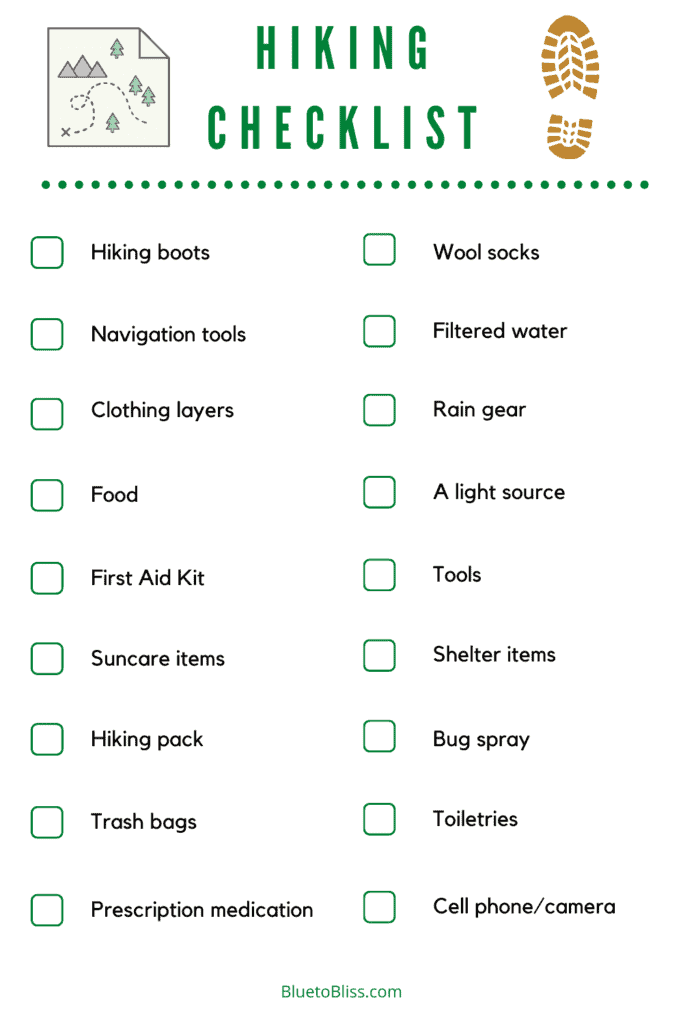

Don’t forget to print your free hiking checklist PDF now so that you don’t forget anything important on your next hiking trip.
Remember, planning ahead and knowing the trail conditions, weather, and time frame you’re working with will go a long way in helping you determine what you need to pack for your particular hiking trip.
So what are you waiting for? Every season is a good season for hiking. Go out and explore this beautiful planet we call home.
Sources
- AllTrails
- Statista: Number of Participants in Hiking in the United States From 2006to 2019
- U.S. Department of Agriculture: Know Before You Go
Love What You’re Seeing So Far?
- Enjoy community support
- Never miss a life-changing post again
- Get immediate access to the free resources library
- Be the first to know about giveaways
What are your best hiking hacks? Share your thoughts in the comments section below.
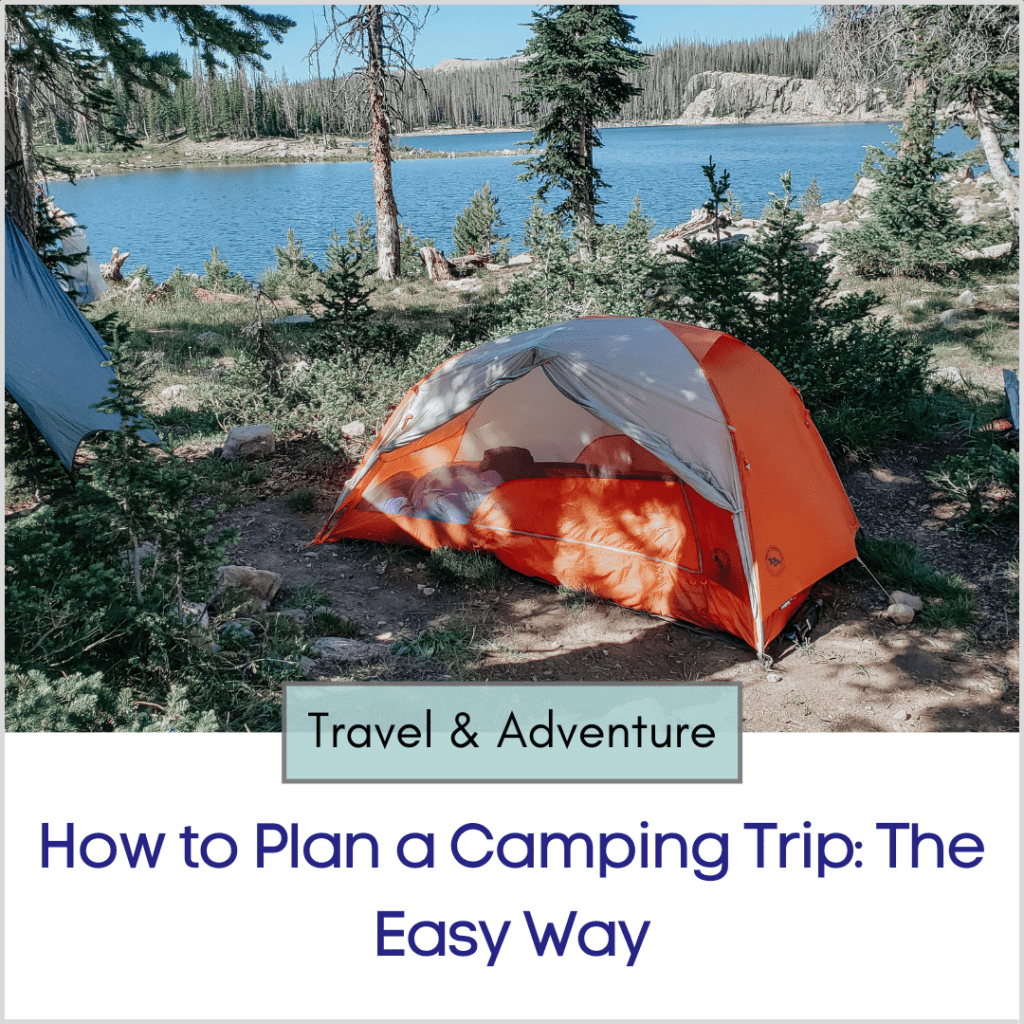
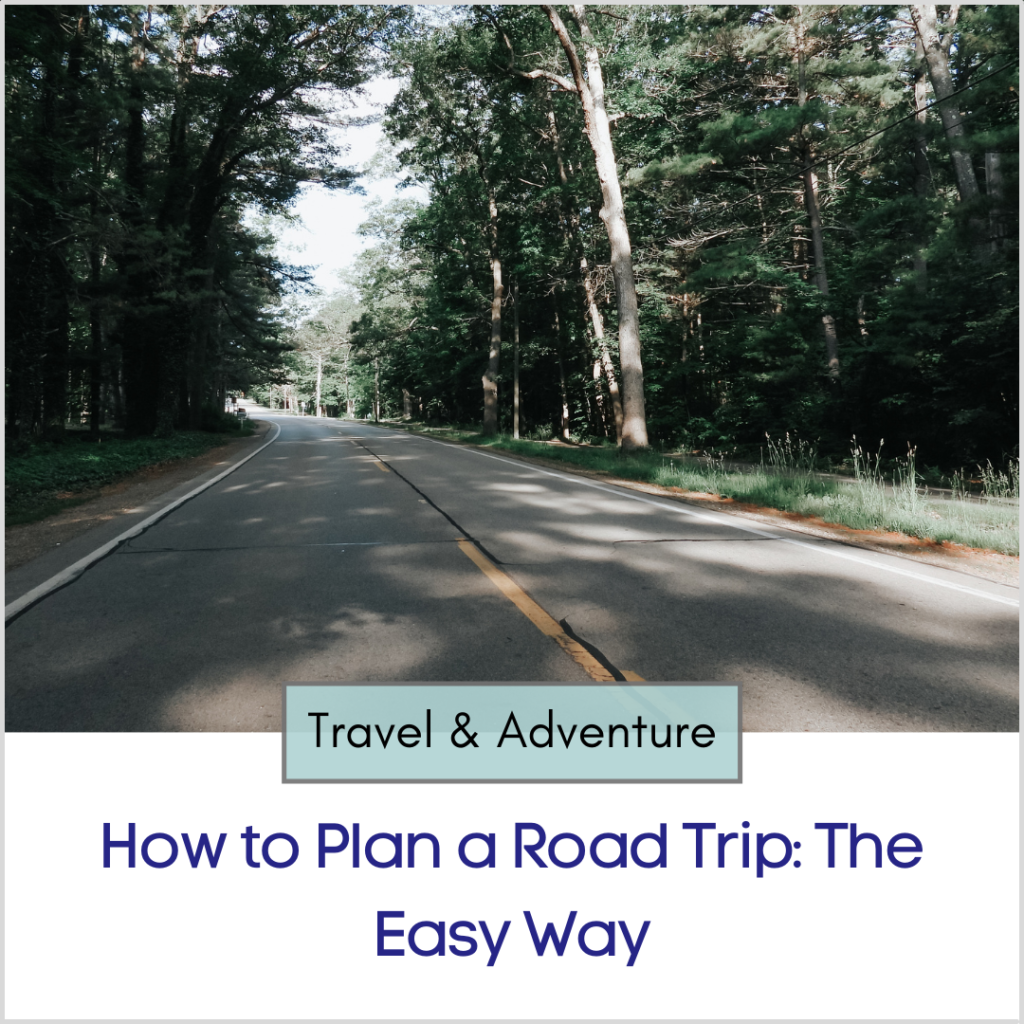


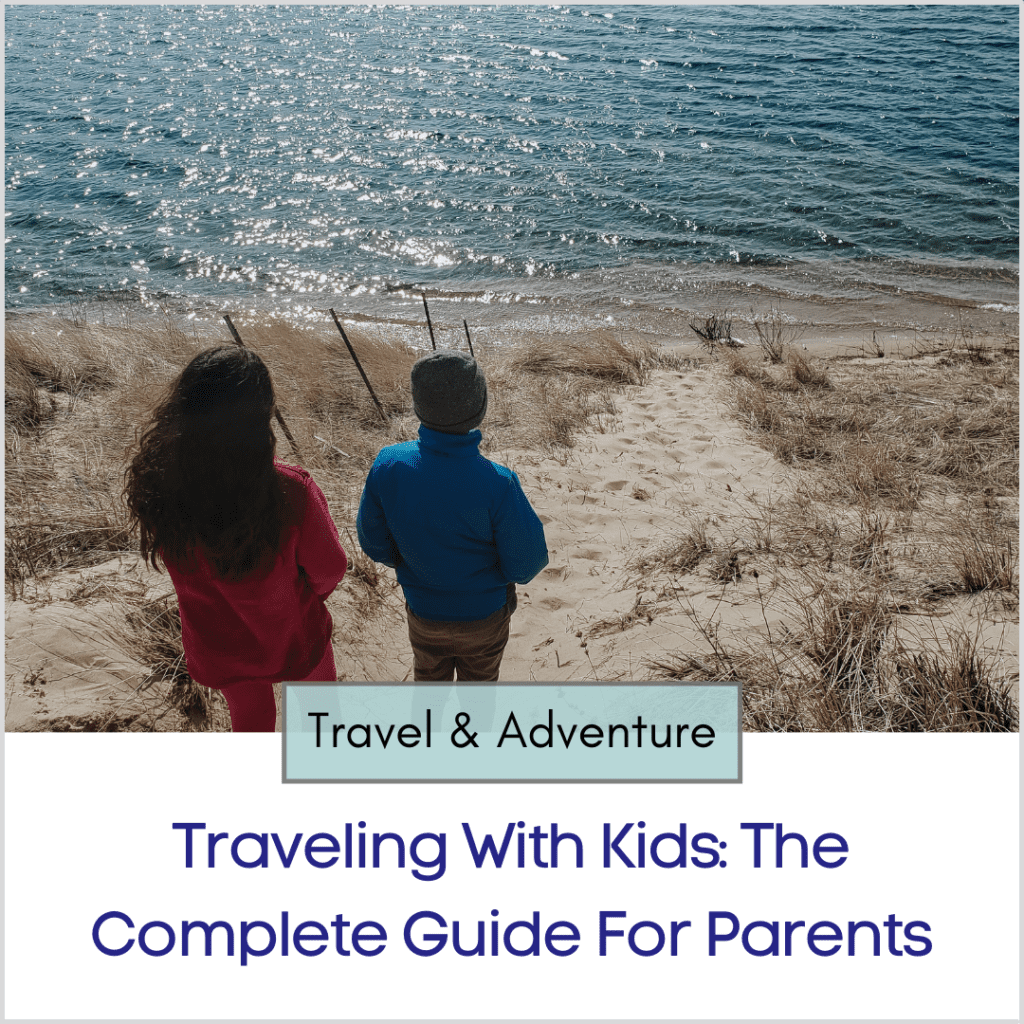


These are very important and useful tips for a hiking trip. I really like you mentioned all the important stuff to pack for a hiking trip. And letting others about our hiking trip is the most essential thing in my perspective. Thank you so much for sharing this amazing post.
I’m so glad you found it useful. Letting people know where you’re going is so important on bigger trips. Thanks for reading.
Really useful post, It’s been my first summer in a new area of my country and exploring it has been good fun. I’ve found the hiking community to be really good as they share so much about good locations to hike and the difficulty level. I think your point about hiking with a companion is a must, especially if you’re just starting out, just in case anything goes wrong. It’s a lot more comforting to be with someone your trust. Thanks for posting!
I agree. It’s definitely a good idea to have someone you trust with you. We’ve been hiking in full sunshine before and within minutes a hail storm came rolling through.
Of all the things you could do at the moment to get away, going on a hike is probably one of the better and safer options. A good list to follow if you’re thinking of doing it
You are absolutely right. We having been hiking nearby the whole time and we almost never see anyone. When we do, everyone is respectful and spaces out to pass on the trail.
Lovely photos and tips. I just make sure
I have always some snacks and my camera
and I’m ready.. My boots are always ready..
All good things to pack. I know what exactly what you mean about keeping your boots ready.
This was super informative! I’ve never went proper hiking before but it’s one of those things I’ve always wanted to try! I think one thing a lot of newbie hikers (like myself) don’t tend to realize is that there’s quite a bit you need to prepare yourself for before doing it, and this was really helpful especially for someone like me whose never done it before. Thank you for sharing!
I’m so glad to hear that. Thank you for sharing your thoughts. You should definitely try hiking. You might just find a new favorite hobby.
Great post! I don’t hike very often because I’m allergic to most trees *face palm*, but I have enjoyed some hiking trips previously. I didn’t even think about packing some of the things on your list. And I’ve had one experience where we got caught in bad weather and it wasn’t fun. I can attest to checking the weather ahead of time.
Weather can change fast. We have been in the sunshine one minute and getting drenched the next. I know exactly what you mean. Sorry about your allergies. No fun.
Day hikes are such fun, especially out on a lovely mountain somewhere, climbing up to see the view. I have been on woodland trails just to see the woods or up to overlooks to look out over the trees and having that spoiled by rain or thirst has taught me to take plenty of water and check the weather forecast for sure!
Thanks for sharing!
I know right. Every time we think we’ll just do a quick hike at our favorite trail and leave our drinks in the car, we regret it. Always take extra water.
as a former hiker – these tips are spot on! IF it weren’t for my health I would still be in the game! 🙂
I’m glad to hear you think so. And I hope your health improves.
Great advice! We are BIG campers and LOVE spending time out in the wilderness. I love that you stressed ‘downloaded’ maps if you’re using your cellphone for navigation. You never know when you’ll find yourself without service while out in the wilderness. The one other thing that I would add to your packing list is some form of portable charging system – either a power bank or a reliable solar charger. If you do get lost and are trying to access information or reach out to help, the worst-case situation would be if your phone died. These devices are quite small and add very, very little weight to your pack, but they can make all the difference!
That’s a great idea. We always turn our phones onto airplane mode so they are still charged three days into our trip. But having that device would be great too. Thanks!
Awesome tips! I’ve definitely messed up hiking trips by not planning well enough.
Yes! Not planning can turn a hiking trip bad quickly.
Great post! Very informative and helpful to refer back to before hiking. I love the AllTrails app also! In some places we have lost cell signal trying to find a trail so it’s helpful to save the directions before you go (if you’re going to the middle of nowhere).
We have had the same experience. You make a great point. Saving the directions beforehand definitely helps.
These are all such great tips for planning a hiking trip. I love to hike but I always like to plan ahead and be prepared!
Planning ahead is so important. You definitely don’t want to just wing it. Thanks for reading.